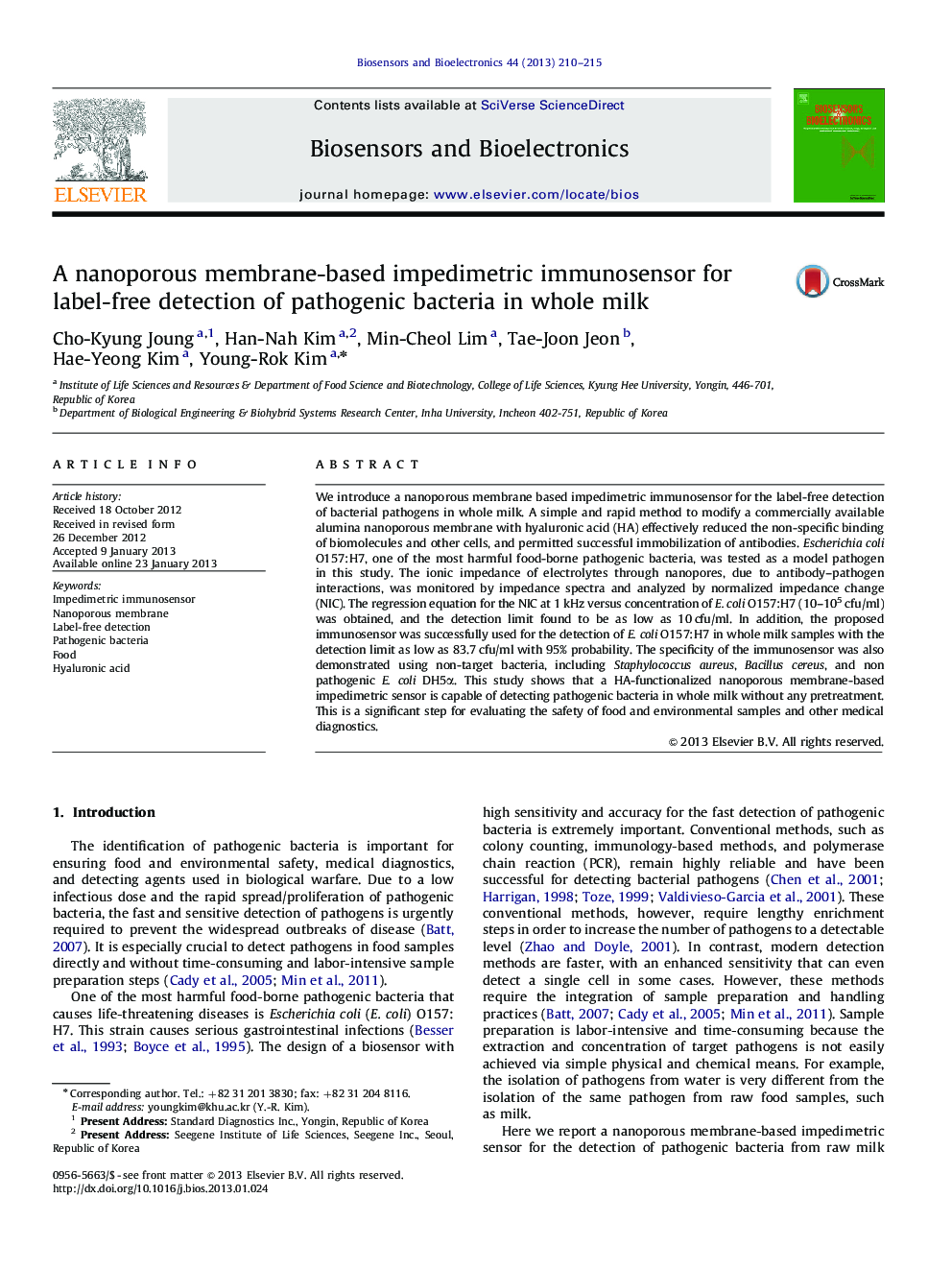| Article ID | Journal | Published Year | Pages | File Type |
|---|---|---|---|---|
| 866916 | Biosensors and Bioelectronics | 2013 | 6 Pages |
We introduce a nanoporous membrane based impedimetric immunosensor for the label-free detection of bacterial pathogens in whole milk. A simple and rapid method to modify a commercially available alumina nanoporous membrane with hyaluronic acid (HA) effectively reduced the non-specific binding of biomolecules and other cells, and permitted successful immobilization of antibodies. Escherichia coli O157:H7, one of the most harmful food-borne pathogenic bacteria, was tested as a model pathogen in this study. The ionic impedance of electrolytes through nanopores, due to antibody–pathogen interactions, was monitored by impedance spectra and analyzed by normalized impedance change (NIC). The regression equation for the NIC at 1 kHz versus concentration of E. coli O157:H7 (10–105 cfu/ml) was obtained, and the detection limit found to be as low as 10 cfu/ml. In addition, the proposed immunosensor was successfully used for the detection of E. coli O157:H7 in whole milk samples with the detection limit as low as 83.7 cfu/ml with 95% probability. The specificity of the immunosensor was also demonstrated using non-target bacteria, including Staphylococcus aureus, Bacillus cereus, and non pathogenic E. coli DH5α. This study shows that a HA-functionalized nanoporous membrane-based impedimetric sensor is capable of detecting pathogenic bacteria in whole milk without any pretreatment. This is a significant step for evaluating the safety of food and environmental samples and other medical diagnostics.
► Nanoporous membrane-based impedimetric immunosensor for pathogen detection in milk. ► Sensitivity and selectivity greatly enhanced by hyaluronic acid interface. ► Detection limit of <102 cfu/ml for E. coli O157 in whole milk.
